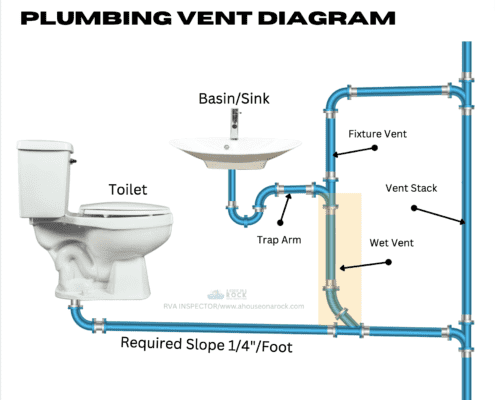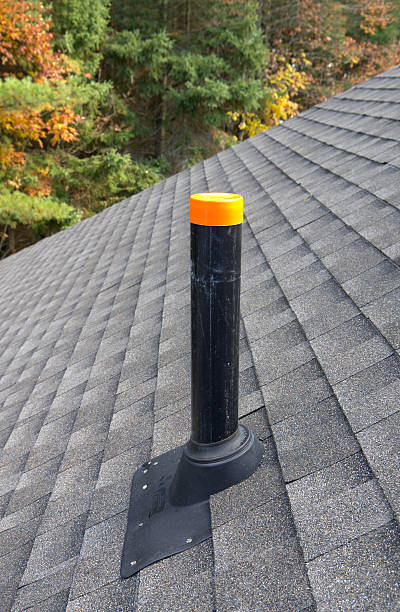We have discovered this post about What Is A Plumbing Vent & How Do They Work? below on the web and accepted it made good sense to write about it with you on my blog.

Proper ventilation in plumbing systems is usually overlooked, yet it is important for preserving the performance and security of your home's plumbing. Air flow aids manage atmospheric pressure, stop the accumulation of damaging gases, and guarantee the reliable removal of waste. In this overview, we will certainly check out the relevance of appropriate pipes air flow, how it works, and the benefits it gives your pipes system.
How Air Flow Works in Pipes Solutions
Air Pressure Guideline
Proper air flow maintains balanced atmospheric pressure within the plumbing system. When water moves through pipes, it displaces air. Without ample air flow, this displacement can develop adverse stress, leading to slow drains pipes or siphoning of water from traps, which can cause undesirable odors to seep right into the home.
Avoiding Drain Gas Build-up
Among one of the most important features of plumbing vents is to avoid sewer gases, such as methane and hydrogen sulfide, from gathering within the home. These gases can position significant health and wellness dangers and are very flammable. Vent pipes enable these gases to escape safely outside.
Helping in Waste Elimination
Air flow helps in the effective removal of wastewater by avoiding airlocks in the drainage system. When air can move easily through the vents, it permits water and waste to stream efficiently with the pipes, lowering the danger of obstructions and backups.
Advantages of Appropriate Air Flow
Enhanced System Performance
Appropriately aerated pipes systems operate much more effectively, with fewer blockages, faster draining, and less strain on the pipes. This performance prolongs the lifespan of the plumbing system.
Improved Air Top Quality
By protecting against sewage system gases from entering your home, appropriate ventilation adds to far better indoor air quality, making your living setting healthier and a lot more comfortable.
Protecting Against Water Damages
Ample ventilation assists prevent water from being siphoned out of traps, which can result in sewer gases entering the home and causing water damage over time.
Steps to Make Certain Proper Air Flow
Consulting Plumbing Codes
Always seek advice from regional pipes codes when creating or customizing your pipes system. These codes supply the required guidelines for proper airing vent and ensure your system satisfies safety requirements.
Regular Assessment and Maintenance
Routine inspections can assist recognize potential air flow concerns before they end up being significant problems. Upkeep jobs, such as cleaning up vent pipes and checking for blockages, are vital for keeping the system in good working order.
Expert Installation
For brand-new installations or major adjustments, it's wise to work with an expert plumbing. They have the knowledge to guarantee the air flow system is appropriately made and set up according to code.
Recognizing Ventilation in Plumbing
Air flow in plumbing refers to the network of pipelines that enable air to stream through the water drainage system. These vents serve multiple objectives, including regulating atmospheric pressure within the pipes, preventing drain gases from entering the home, and assisting in the smooth flow of wastewater.
Types of Plumbing Vents
Key Heap Vent
The main stack vent, also referred to as the air vent pile, is the primary air vent in a plumbing system. It prolongs from the primary drainpipe align through the roofing system, enabling gases to get away and fresh air to go into the system.
Branch Vent
Branch vents attach to the primary stack vent and offer individual components, such as sinks, commodes, and showers. These vents guarantee that each fixture has sufficient air flow to work effectively.
Air Admittance Valve (AAV).
An Air Admission Shutoff (AAV) is a one-way shutoff that permits air to enter the plumbing system without the demand for a traditional vent pipeline expanding via the roof. AAVs are commonly made use of in renovations or locations where mounting a standard air vent is not practical.
Indicators of Poor Ventilation in Pipes.
Slow Draining Fixtures.
If your sinks, bathtubs, or toilets are draining pipes slowly, maybe a sign of inadequate ventilation. Insufficient air flow can develop a vacuum cleaner impact, making it hard for water to drain appropriately.
Gurgling Appears.
Gurgling sounds originating from drains pipes are often a result of air being drawn via water traps because of unfavorable pressure in the pipelines. This is a clear indicator of inadequate air flow.
Unpleasant Smells.
Sewage system smells inside your home are a red flag that your pipes system is not properly aerated. This can imply that drain gases are not being appropriately aired vent outside, leading to possibly unsafe problems.
Typical Ventilation Mistakes.
Inadequate Vent Sizing.
Making use of undersized air vent pipes can bring about inadequate air flow and pressure inequalities in the system. It's essential to make use of vents that fulfill the certain demands of your plumbing system.
Improper Vent Positioning.
Putting vents as well far from the components they serve can reduce their performance. Appropriate placement makes certain that air can flow easily and efficiently via the system.
Ignoring Code Needs.
Building ordinance give particular standards for pipes air flow. Neglecting these codes can cause a system that falls short to operate correctly and might lead to costly repair work or health hazards.
Verdict.
Proper air flow is an essential part of any plumbing system, guaranteeing that it functions efficiently and securely. By comprehending the significance of ventilation, identifying the indications of poor air flow, and taking steps to maintain your system, you can protect against expensive issues and shield your home's air high quality.
What is a Plumbing Vent and it's used for?All plumbing systems in residential and commercials construction have a plumbing vent. It doesn’t just vent unwanted odors from the drainage system to the outside; it actually serves an important purpose by supplying air to the system.
The plumbing drainage system is actually called a drainage, waste and vent (DWV) system. When water flows down the piping, an air supply (vent) is needed to allow the water to flow. Think of the vertical pipe as a drinking straw. If you plug the top end of a straw, liquid won’t drain from it.
The DWV system in your building consists of a series of pipes connected to each fixture; they extend above each fixture, and the system terminates at an open pipe that extends through the roof. This piping allows air into the system and prevents unbalanced pressures in the piping.
?The vent also prevents the system from drawing water out of a trap at the fixture with the characteristic “glug-glug-glug” as the drain gasps for air. Plumbing traps should drain smoothly and never “glug” or gasp for air.
If you have a drain that empties slowly or gurgles as it drains, this may indicate a venting problem. If you flush a toilet and the sink gurgles, there’s definitely a vent problem. It is good idea to have a Plumber check this.
https://www.ameliashomeinspection.com/blog/what-is-a-plumbing-vent-and-its-used-for

We are very serious about Why Plumbing Air Vents Are Important and I am assuming you appreciated our blog posting. You should pause to distribute this blog entry if you appreciated it. I am grateful for being here. Revisit us soon.
At This Website